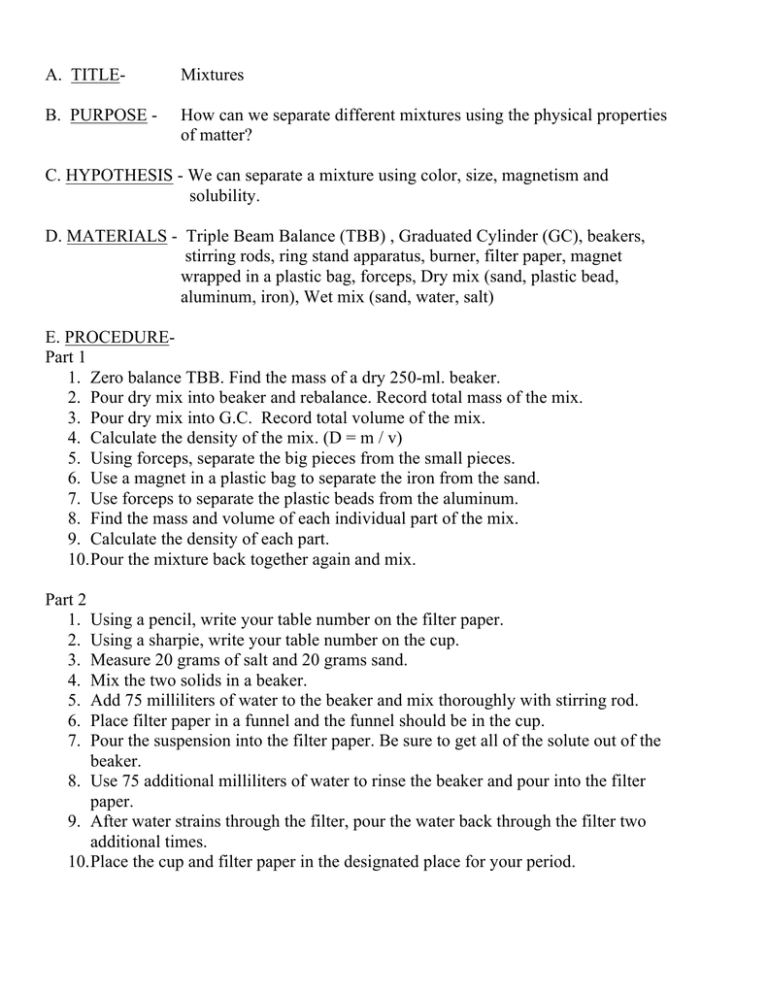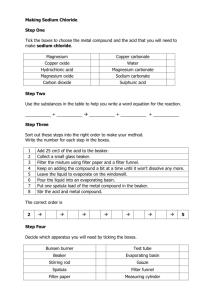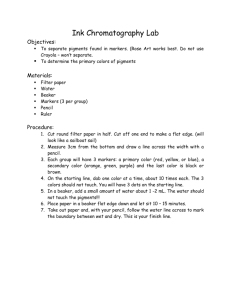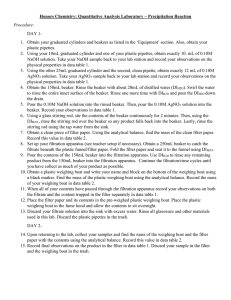Document 14194535
advertisement

A. TITLE- Mixtures B. PURPOSE - How can we separate different mixtures using the physical properties of matter? C. HYPOTHESIS - We can separate a mixture using color, size, magnetism and solubility. D. MATERIALS - Triple Beam Balance (TBB) , Graduated Cylinder (GC), beakers, stirring rods, ring stand apparatus, burner, filter paper, magnet wrapped in a plastic bag, forceps, Dry mix (sand, plastic bead, aluminum, iron), Wet mix (sand, water, salt) E. PROCEDUREPart 1 1. Zero balance TBB. Find the mass of a dry 250-ml. beaker. 2. Pour dry mix into beaker and rebalance. Record total mass of the mix. 3. Pour dry mix into G.C. Record total volume of the mix. 4. Calculate the density of the mix. (D = m / v) 5. Using forceps, separate the big pieces from the small pieces. 6. Use a magnet in a plastic bag to separate the iron from the sand. 7. Use forceps to separate the plastic beads from the aluminum. 8. Find the mass and volume of each individual part of the mix. 9. Calculate the density of each part. 10. Pour the mixture back together again and mix. Part 2 1. Using a pencil, write your table number on the filter paper. 2. Using a sharpie, write your table number on the cup. 3. Measure 20 grams of salt and 20 grams sand. 4. Mix the two solids in a beaker. 5. Add 75 milliliters of water to the beaker and mix thoroughly with stirring rod. 6. Place filter paper in a funnel and the funnel should be in the cup. 7. Pour the suspension into the filter paper. Be sure to get all of the solute out of the beaker. 8. Use 75 additional milliliters of water to rinse the beaker and pour into the filter paper. 9. After water strains through the filter, pour the water back through the filter two additional times. 10. Place the cup and filter paper in the designated place for your period.






